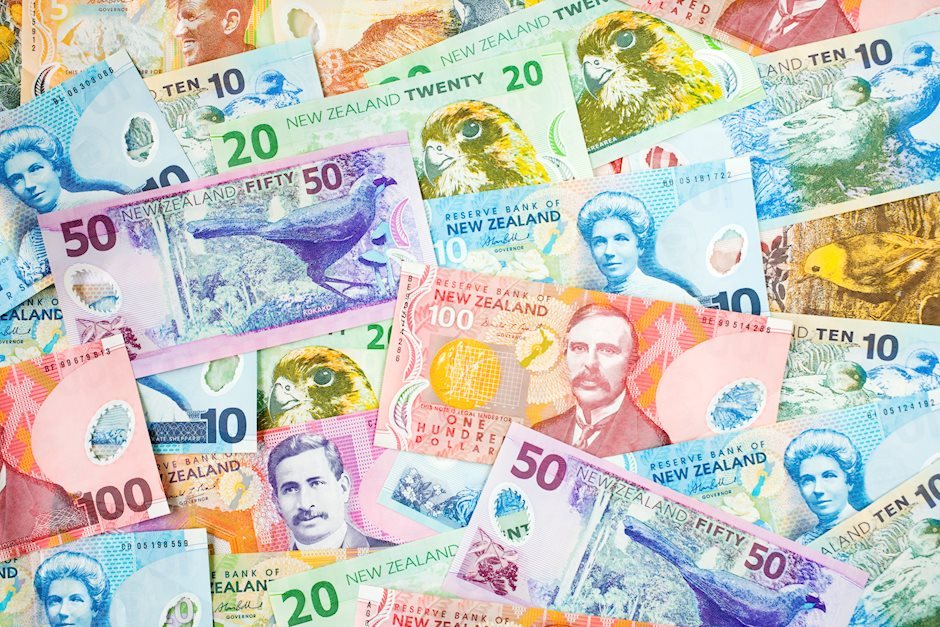NZD/USD recovers from 0.5800, focus is on RBNZ meeting
- NZD/USD rebounds from 0.5800 as the US Dollar gives back opening gains.
- Investors await the US PCE inflation for fresh Fed interest rate guidance.
- The RBNZ is expected to cut interest rates by 50 bps to 4.25%.

The NZD/USD pair bounces back to near 0.5850 in Tuesday’s North American session after posting a fresh yearly low of 0.5800 in the opening session. The Kiwi pair recovers as the US Dollar (USD) surrenders its intraday gains triggered after United States (US) President-elect Donald Trump threatened to raise tariffs on other economies of North America from where he expects China to pour illicit drugs into the US economy.
Trump said he would impose 25% tariffs on Mexico and Canada and 10% on China in addition to 60%, which was mentioned in his election campaign. The initial reaction from the US Dollar was bullish, however, it failed to hold gains. The US Dollar Index (DXY), which gauges the Greenback’s value against six major currencies, drops below 107.00.
Meanwhile, investors await the Federal Open Market Committee (FOMC) minutes for the policy meeting held on November 7, which will be published at 19:00 GMT. In the policy meeting, the Fed reduced interest rates by 25 basis points (bps) to 4.50%-4.75%.
This week, investors will pay close attention to the US Personal Consumption Expenditure Price Index (PCE) data for October, which will be published on Wednesday. Economists expect the inflation data to have accelerated from September readings on an annual basis. The month-on-month headline and core PCE inflation data are estimated to have grown steadily. The inflation data will significantly influence market expectations for the Federal Reserve’s (Fed) likely interest rate action in the December meeting.
Going forward, the New Zealand Dollar (NZD) will be influenced by the Reserve Bank of New Zealand (RBNZ) interest rate decision, which will be announced on Wednesday. According to a Reuters poll, the RBNZ is expected to cut interest rates by 50 bps to 4.25%. This would be the second straight 50 bps interest rate cut by the RBNZ and the third one of the current rate-easing cycle.
Economic Indicator
RBNZ Interest Rate Decision
The Reserve Bank of New Zealand (RBNZ) announces its interest rate decision after its seven scheduled annual policy meetings. If the RBNZ is hawkish and sees inflationary pressures rising, it raises the Official Cash Rate (OCR) to bring inflation down. This is positive for the New Zealand Dollar (NZD) since higher interest rates attract more capital inflows. Likewise, if it reaches the view that inflation is too low it lowers the OCR, which tends to weaken NZD.
Read more.Next release: Wed Nov 27, 2024 01:00
Frequency: Irregular
Consensus: 4.25%
Previous: 4.75%
Source: Reserve Bank of New Zealand
The Reserve Bank of New Zealand (RBNZ) holds monetary policy meetings seven times a year, announcing their decision on interest rates and the economic assessments that influenced their decision. The central bank offers clues on the economic outlook and future policy path, which are of high relevance for the NZD valuation. Positive economic developments and upbeat outlook could lead the RBNZ to tighten the policy by hiking interest rates, which tends to be NZD bullish. The policy announcements are usually followed by Governor Adrian Orr’s press conference.
Author

Sagar Dua
FXStreet
Sagar Dua is associated with the financial markets from his college days. Along with pursuing post-graduation in Commerce in 2014, he started his markets training with chart analysis.

















